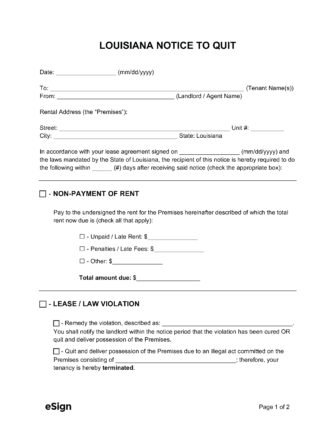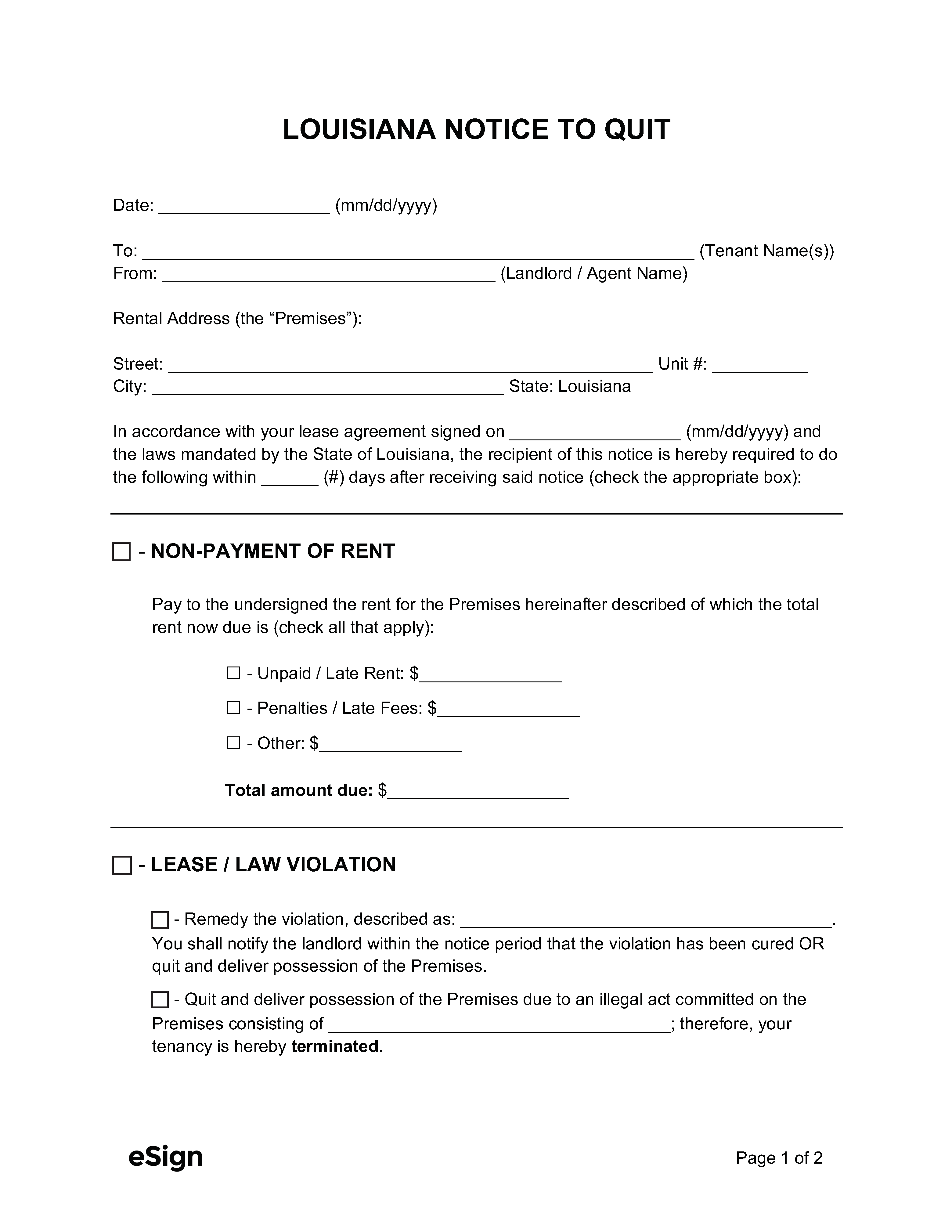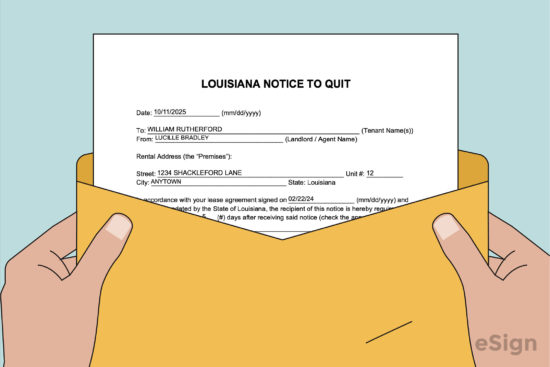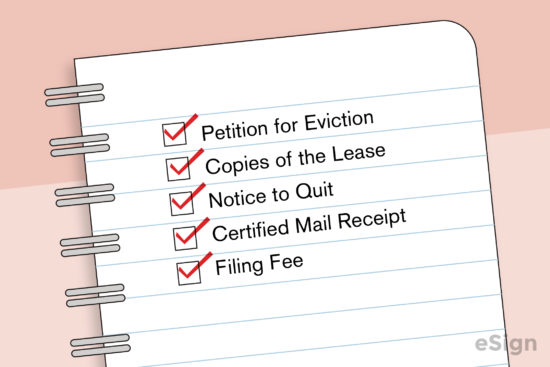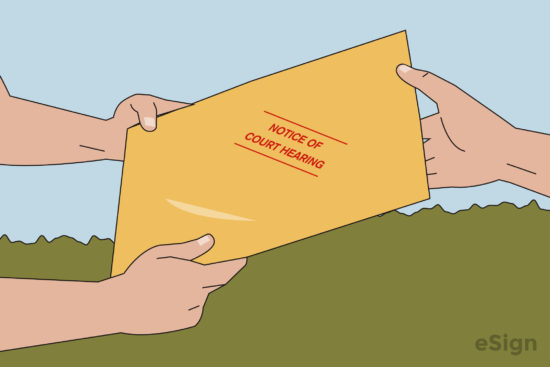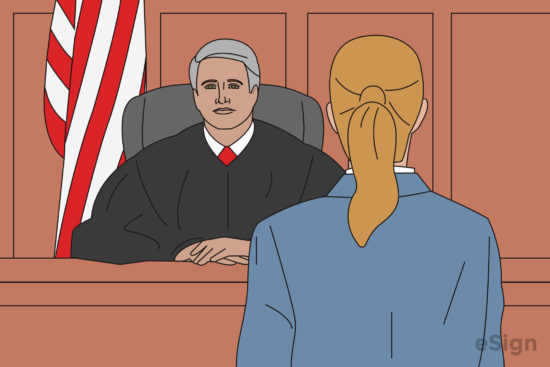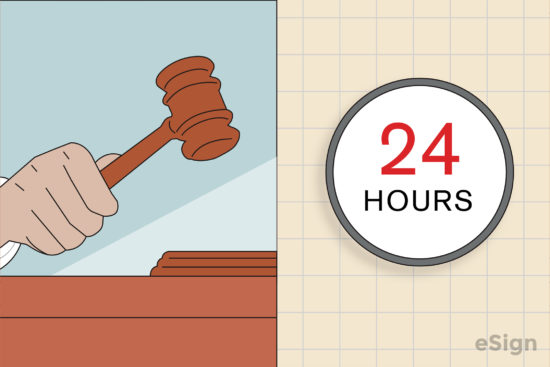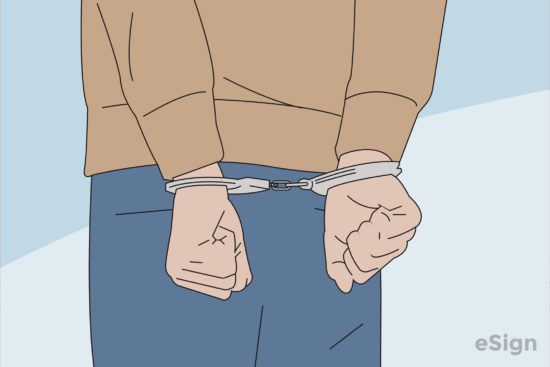Eviction Notices: By Type (4)
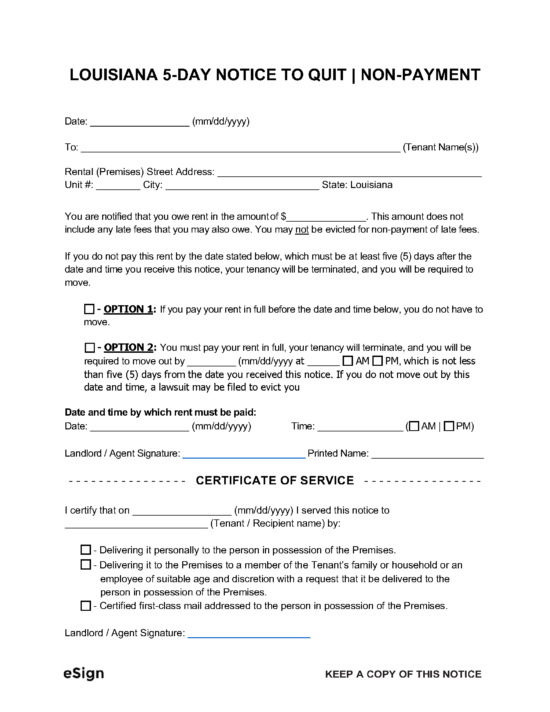 5-Day Notice to Quit | Non-Payment – Used when a tenant fails to pay rent. Gives them five days to pay or vacate the property. 5-Day Notice to Quit | Non-Payment – Used when a tenant fails to pay rent. Gives them five days to pay or vacate the property.
Download: PDF, Word (.docx), OpenDocument |
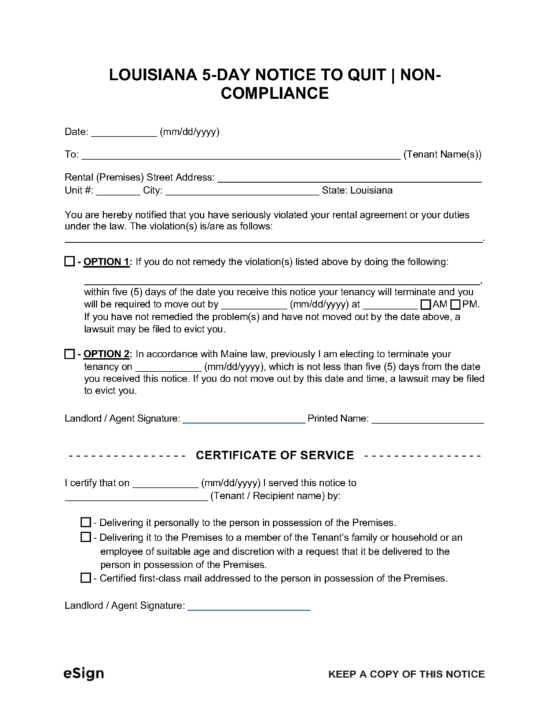 5-Day Notice to Quit | Non-Compliance – Informs a tenant that they have breached the terms of their lease and they have five days to fix their violation or move out. 5-Day Notice to Quit | Non-Compliance – Informs a tenant that they have breached the terms of their lease and they have five days to fix their violation or move out.
Download: PDF, Word (.docx), OpenDocument |
5-Day Notice to Quit | Expiration of Term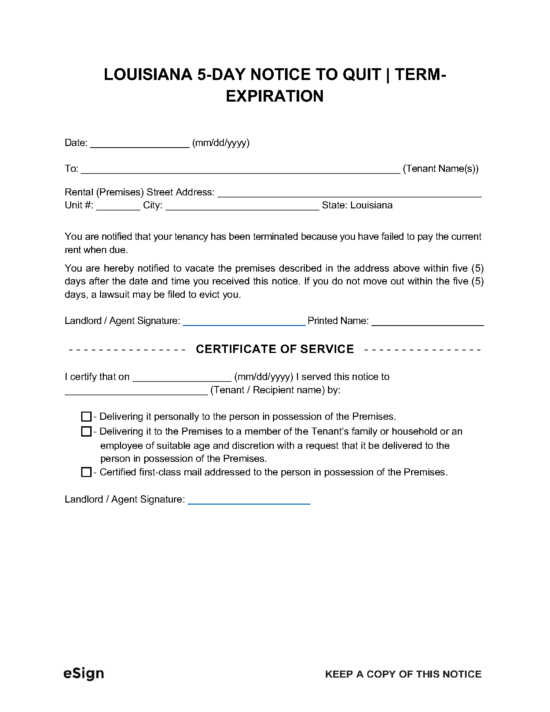 – Used when a tenant remains on the premises after the expiration of their fixed-term lease, giving them five days to vacate the property. – Used when a tenant remains on the premises after the expiration of their fixed-term lease, giving them five days to vacate the property.
Download: PDF, Word (.docx), OpenDocument |
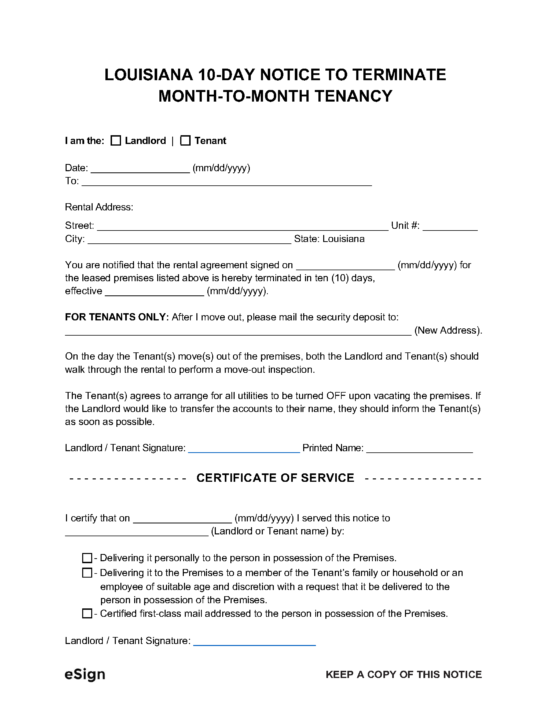 10-Day Notice to Terminate Month-to-Month Lease – Used to terminate a monthly tenancy. The terminating party must deliver the notice at least ten days before the start of the next rental period. 10-Day Notice to Terminate Month-to-Month Lease – Used to terminate a monthly tenancy. The terminating party must deliver the notice at least ten days before the start of the next rental period.
Download: PDF, Word (.docx), OpenDocument |
Notice Requirements
How to Evict a Tenant in Louisiana
Step 1 – Draft an Eviction Notice
Landlords must draft a notice that describes the reason for the termination and the timeframe in which the tenant must comply with the notice terms.
Step 2 – Deliver Eviction Notice to Tenant
The notice should be hand-delivered to the tenant in the presence of at least one witness. If the tenant is not home at the time of delivery, the notice may instead be posted to the door of the premises with at least one witness present, or sent by certified mail with a return receipt requested (receipt must be signed by the tenant).
Step 3 – Wait for Notice Period to Expire
The notice period is five days for non-payment, non-compliance with the lease, or failure to vacate after the expiration of a rental term (not including weekends or holidays). The landlord must wait for the notice period to expire before proceeding with the eviction.
Step 4 – File a Petition for Eviction
The landlord must visit a city court (also known as a parish court) or justice of the peace court to file a Petition for Eviction alongside a Court Information Sheet.
Copies of the lease, the Notice to Quit, and the certified mail receipt (if applicable) must be included with the court documents. Upon submission, a filing fee will be required, along with an additional amount for each additional tenant.
Sample Court Documents:
- Petition for Eviction
Step 5 – Notice of Court Hearing
After the landlord’s petition has been filed, the court will schedule a hearing date and issue a Rule to Show Cause (a.k.a. Rule for Possession) to be served on the tenant. This document will inform the tenant of the date they are required to appear in court should they wish to contest the case.
Before the court date, the tenant will have the opportunity to file an Answer (SAMPLE) with the court to state the reasons they believe they are entitled to possession of the dwelling.
Step 6 – Attend Court Hearing
Both the tenant and landlord must appear in court for the eviction trial. If one party fails to attend the hearing, a judgment will be ruled in favor of the party in attendance. Any witness to the service of the notice to quit must also attend the hearing.
The landlord should be sure to bring copies of their eviction documents and the lease.
Step 7 – Judgement
At the hearing, the court will determine whether the landlord is entitled to reclaim possession of the premises. If the tenant prevails, they will be permitted to stay. If the court rules in favor of the landlord, the tenant will be forced to vacate the property within 24 hours.
Step 8 – Evict Tenant
If the tenant fails to vacate within 24 hours following the eviction judgment, the landlord must make arrangements for a Warrant for Possession (a.k.a. Writ of Possession). This document will authorize law enforcement to remove the tenant from the premises. The landlord must then schedule a time for a constable, marshall, or sheriff to visit the property and remove the tenant.
Court Forms + Resources
Forms
- Answer – Sample (Jefferson Parish)
- Signing: Tenant
- Court Information Sheet
- Signing: N/A
- Judgment for Eviction
- Signing: Judge
- Petition for Eviction – Sample (Shreveport City)
- Signing: Landlord and Clerk
- Rule to Evict (Rule for Eviction)
- Signing: N/A
- Rule to Show Cause (Rule for Possession)
- Signing: N/A
- Warrant for Possession (Writ of Possession)
- Signing: N/A
Resources
-
- Eviction Procedure Guidelines
- Louisiana Law Help | Evictions
